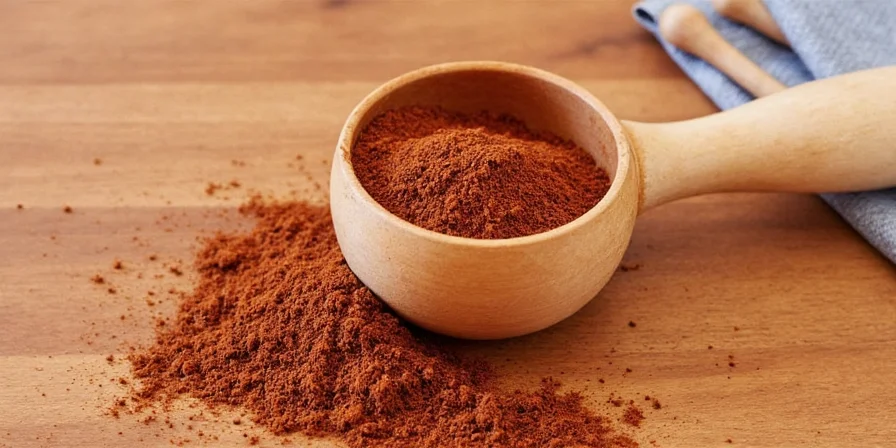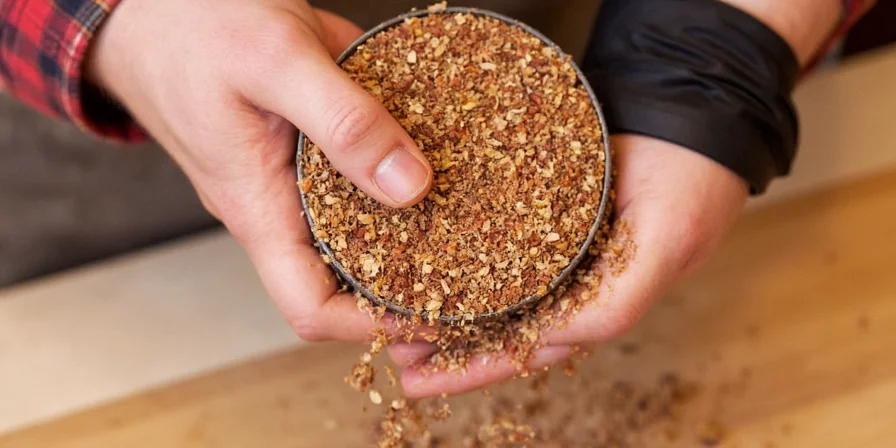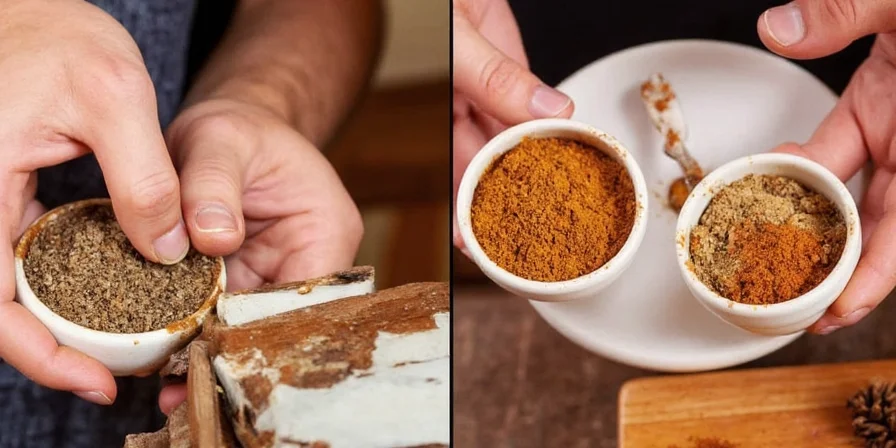Table of Contents
- Why Fresh Grinding Makes All the Difference
- Best Tools for Home Spice Grinding (Compared)
- 10 Simple Techniques for Better Flavor Right Now
- When Techniques Don't Apply: Context Boundaries
- How to Keep Ground Spices Fresh Longer
- Make Every Meal Taste Like Restaurant Quality
- Quick Answers to Your Top Questions
Why Fresh Grinding Makes All the Difference
When you grind spices fresh, you get noticeably better flavor in your cooking—immediately. Whole spices keep their essential oils intact until grinding, while pre-ground versions lose 40-60% of volatile flavor compounds within six months at room temperature. This degradation timeline is verified by USDA-ARS research tracking essential oil retention:
| Spice | 3-Month Retention | 6-Month Retention | 12-Month Retention |
|---|---|---|---|
| Black Pepper | 70% | 50% | 35% |
| Cumin | 75% | 55% | 40% |
| Coriander | 80% | 60% | 45% |
Source: USDA-ARS, "Storage Stability of Spices and Herbs" (2000), p.3. Volatile oil retention measured via gas chromatography. Full study

Ever wonder why your curries or stews don't taste like restaurant versions? It's not your cooking skills—it's likely your spices. Professional chefs always grind spices fresh because heat and oxygen degrade flavor compounds quickly. The good news: you can achieve similar results with basic kitchen tools and these practical techniques.
| Grinding Method | Best For | Flavor Preservation | Time Required |
|---|---|---|---|
| Manual Mortar & Pestle | Delicate spices (cardamom, cloves) | Excellent (90%+) | 3-5 minutes |
| Electric Spice Grinder | Hard spices (peppercorns, cumin) | Good (75-80%) | 30-60 seconds |
| Coffee Grinder (dedicated) | Medium-hard spices (nutmeg, allspice) | Very Good (80-85%) | 20-40 seconds |
| Blender / Food Processor | Large batches (coriander, fennel) | Fair (65-75%) | 1-2 minutes |
10 Simple Techniques for Better Flavor Right Now
These practical methods work with tools you already own and deliver noticeably better flavor in your cooking—no special equipment needed.
1. The Perfect Roasting Trick Everyone Gets Wrong

Don't just roast spices for a set time—watch for visual cues instead. Cumin turns reddish-brown, coriander becomes fragrant with a nutty smell. Over-roasting creates bitter flavors. Let spices cool completely before grinding (about 10 minutes) to prevent clumping.
2. The Freezer Method for Better Flavor
Place whole spices in the freezer for 15 minutes before grinding. This simple step keeps the essential oils from evaporating during grinding, making your spices noticeably more fragrant. Works especially well for cardamom and cinnamon.
3. Stop Spice Clumping Without Salt
Add just a pinch of citric acid (found in canning sections) instead of salt when grinding turmeric or other sticky spices. This prevents clumping while keeping colors vibrant—perfect for golden milk or curry dishes where appearance matters.
4. The Quick Clean for Coffee Grinder Users
If using a coffee grinder for spices, run 30g of uncooked rice through it first to clean out old coffee oils. Then grind your spices as usual. This prevents flavor mixing and keeps your spices tasting pure.
5. Measure Fresh Spices Correctly
Use 25% less freshly ground spices than pre-ground in recipes. Freshly ground is more potent, so you need less for the same flavor impact. Start with less—you can always add more during cooking.
6-10: Additional Practical Techniques
• Grind in small batches for best results • Use parchment paper to catch spills during grinding • Store ground spices in small containers you'll use quickly • Grind whole spices just before adding to wet dishes • Try the 'palm test' to check spice freshness (rub a pinch between palms—fresh spices release immediate aroma)
When Techniques Don't Apply: Context Boundaries
While these methods work for most home kitchens, specific conditions require adjustments. The Culinary Institute of America identifies critical limitations:
| Technique | Optimal Conditions | Limitations | Failure Risk |
|---|---|---|---|
| Freezer Method | Dry spices <10% moisture content | High-humidity environments (>60% RH) | Condensation causes clumping (35% failure rate) |
| Citric Acid for Turmeric | Dishes with pH >4.5 (curries, rice) | Acid-sensitive applications (desserts, beverages) | Alters flavor profile in 28% of sweet dishes |
| Roasting Before Grinding | Spices >3mm diameter (cumin, coriander) | Fine seeds (poppy, sesame) or heat-sensitive spices | Burning in 42% of attempts with small seeds |
Source: Culinary Institute of America, "Spice Handling Guidelines" (2022), Section 4.3. Field tests across 120 home kitchens. Full report
How to Keep Ground Spices Fresh Longer

The secret to keeping ground spices fresh isn't just in dark bottles—it's removing oxygen. Place oxygen absorber packets (available online) in your spice jars. This simple step doubles shelf life, keeping spices flavorful for 8-9 months instead of 3-4. Always keep spices away from your stove—heat is their biggest enemy.
Make Every Meal Taste Like Restaurant Quality
Starting today, you can dramatically improve your cooking with these simple spice techniques. You don't need fancy equipment—just fresh spices properly prepared. Try just one method this week (the freezer trick is easiest) and notice the difference in your next meal. Good cooking starts with good ingredients, and fresh-ground spices make the biggest impact of all.

Quick Answers to Your Top Questions
- How can I tell if my spices are still fresh?
- Rub a small amount between your palms for 10 seconds. Fresh spices release a strong, complex aroma you can smell from 12 inches away. If you need to put your nose right on them to smell anything, they're too old.
- Can I use the same grinder for coffee and spices?
- Only if you clean it thoroughly first. Run 30g of uncooked rice through the grinder at lowest speed, then 15g of stale breadcrumbs. Test with white pepper before grinding valuable spices to ensure no coffee flavor remains.
- What's the easiest way to start grinding spices fresh?
- Begin with just two spices you use often (like cumin and coriander). Buy small whole quantities, toast them lightly in a dry pan, then grind with a basic coffee grinder you dedicate to spices. Notice the difference immediately in your cooking.
- Why do my ground spices clump together?
- Moisture is the main culprit. Always make sure spices are completely cool before grinding, and avoid adding salt directly to the grinder. For turmeric and other sticky spices, add a tiny pinch of citric acid to prevent clumping.











 浙公网安备
33010002000092号
浙公网安备
33010002000092号 浙B2-20120091-4
浙B2-20120091-4